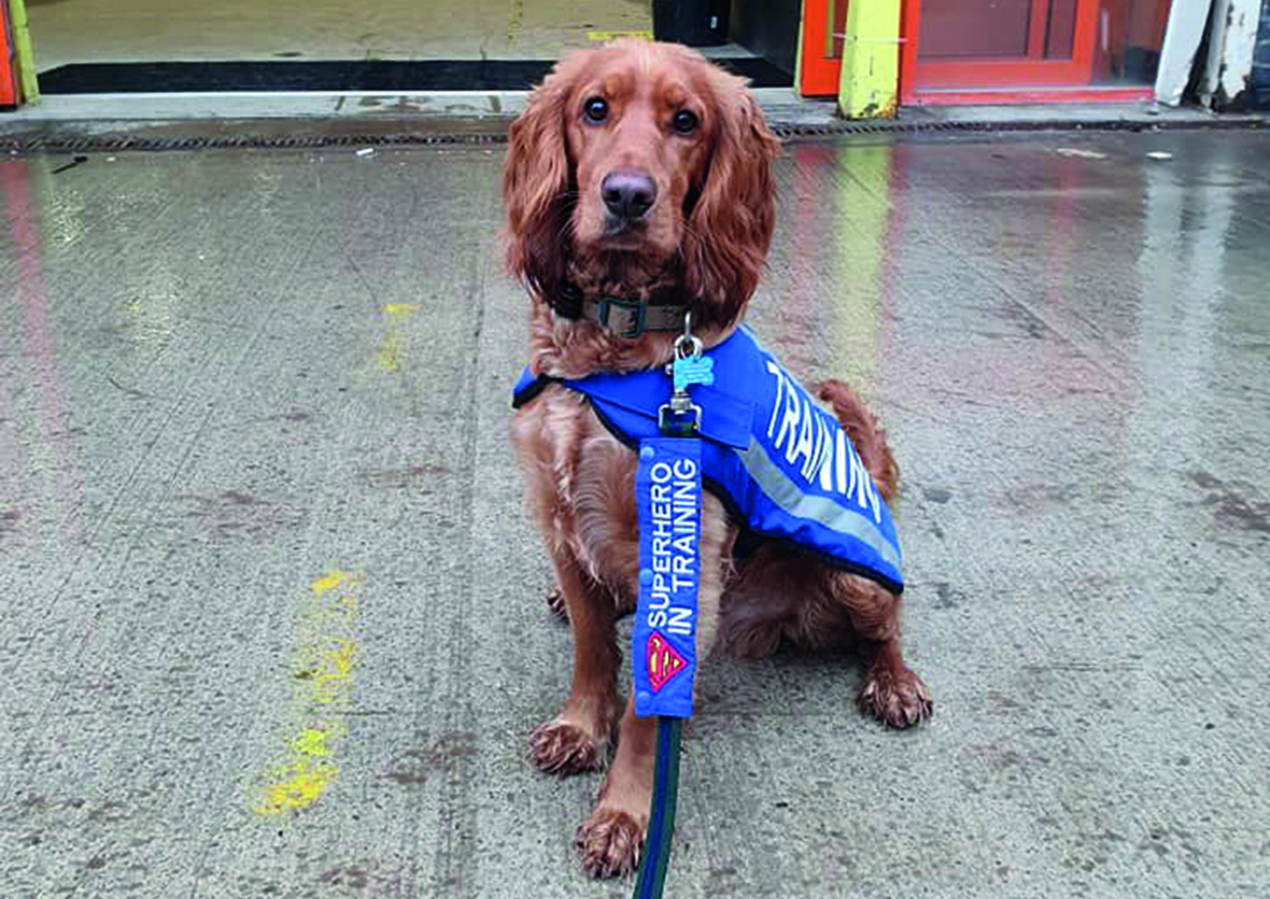As a society, we often take everyday life for granted. We know that we’re only on this earth for a matter of time, yet none of us knows exactly how long that time will be.
When my son Aidan was 10, he collapsed at school, becoming unresponsive. After months of intense diagnostics, a specialist at Alder Hey Children’s Hospital diagnosed Aidan with catecholaminergic polymorphic ventricular tachycardia (CPVT) – a life-threatening heart condition. If Aidan’s heart rate increases through stress or heightened emotions, this can lead to cardiac arrest and untimely death.
There is no cure.
Aidan is now 14 and faces additional challenges due to having autism and severe obsessive compulsive disorder (OCD). Clinical recommendations suggest that having an assistance dog would help Aidan in daily life, providing practical and emotional support, whilst aiding him towards an independent future.
An assistance dog is a dog that is trained to assist a disabled individual. Assistance dogs carry out a variety of practical tasks, as well as supporting independence and confidence.
Typically, when people think of an assistance dog, they might think of a guide dog or a medical detection dog. However, there are also many other assistance dogs that are specifically task-trained to assist their disabled handlers.
ADUK is a coalition of eight assistance dog charities. Assistance dogs can be trained outside of ADUK member organisations, although the UK government Disability Unit is asking for a “generic public access test” to be available for both owner-trained and ADUK charity-trained assistance dogs.
Each ADUK charity has its own version of a public access test. Upon completion, the animal becomes an accredited assistance dog. However, as this test is currently not available to owner-trained assistance dogs, this is not a requirement in the Equalities Act.
The problem for us is that ADUK charities only consider children aged between three and 10 years old. Due to funding restraints for charities and the government providing no funding to support any assistance dog charities, we have to self-fund and training is costly.
Frankie is our beautiful 12-month-old cocker spaniel. Alongside ADUK trainer Christine Meaney and myself, Aidan is learning to train Frankie to become his assistance dog.
It takes a minimum of two years to train an assistance dog and Frankie’s training is adapted specifically for Aidan’s needs every step of the way.
One of the biggest battles is that the use of an assistance dog needs to be acknowledged in Aidan’s Education, Health and Care Plan if he is to receive help with funding and have the clinical recommendations accepted as a health need. Disappointingly, the National Institute for Health and Care Excellence has no guidelines for assistance dogs.
We need to talk about the acceptance of this critical need. We already know assistance dog requirements for children is a nationwide issue, with many other people who are also in the same position.
On a recent walk, Frankie instinctively stood in front of Aidan to stop him from going any deeper into the water when he was cleaning his wellies. Frankie then refocused Aidan’s attention to guide him back to the shore.
Sadly, Aidan has lost the majority of his childhood. This isn’t a path that we could have foreseen, but he is my son and such an amazing young man. Not many people are fortunate enough to see the real Aidan but, with Frankie by his side, he is once again living and challenging his fears, all because of the love he has for his friend.
No words can begin to describe the harrowing feeling that now precedes us for the rest of our lives: the life-threatening condition that is aggravated by Aidan’s health needs not being met. Every day, I have to make decisions that have consequences that no parent should ever have to make.
I cannot deny that we live in fear. As a mother I just want to protect my son. It’s evident that Frankie too shares this love for Aidan, bringing him out of himself, helping him to live, rather than merely exist.
Together, Frankie and Aidan are a partnership it is remarkable to witness daily. This bond is giving more hope than we could ever have previously wished for. Frankie is as much a part of Aidan as his own heartbeat.
But hope and love are far greater than fear. To see Aidan and Frankie not only live their lives together, but experience the pure happiness that comes with it, is all any mother could ever hope for their child.
Natasha Eastwood lives in Stalybridge with her son, Aidan and his assistance dog, Frankie

